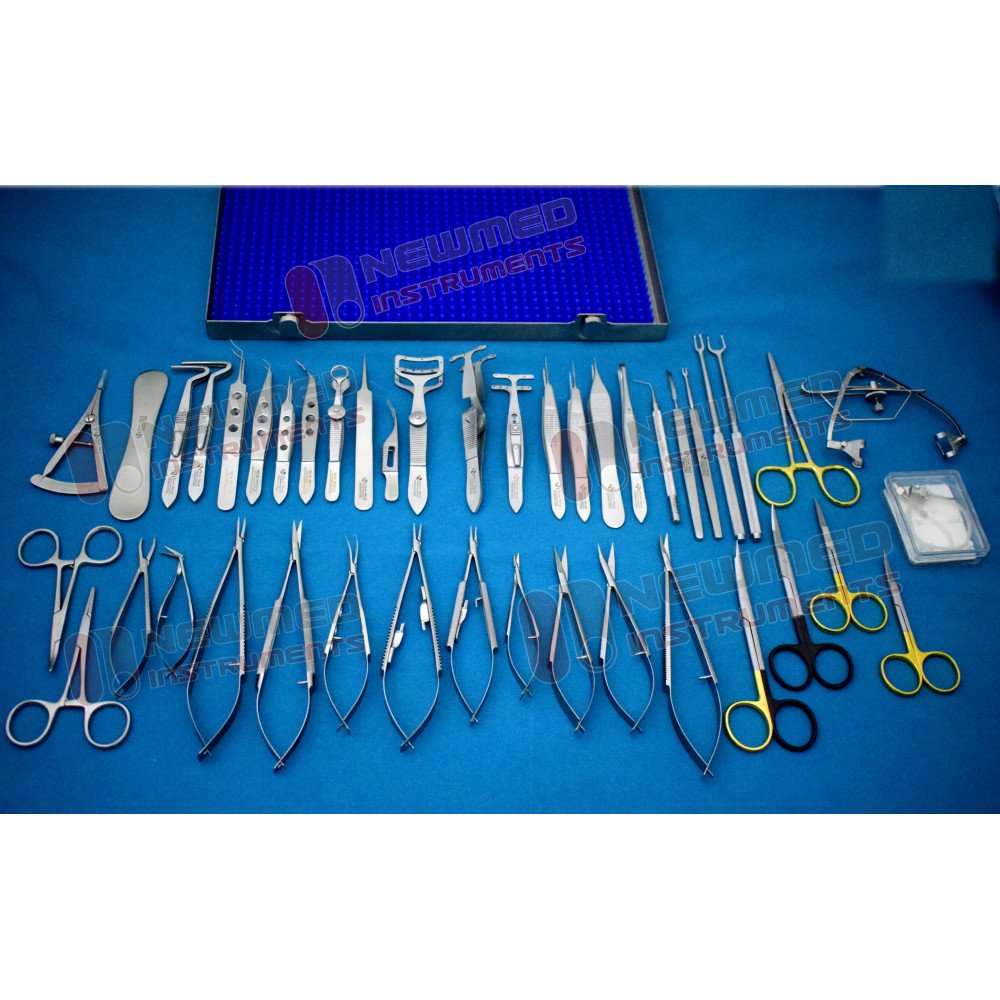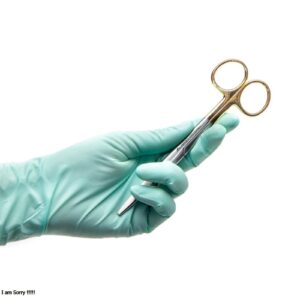
Cataract surgery is one of the most common and successful surgical procedures performed globally, restoring vision and significantly improving quality of life for millions. The success of this delicate microsurgery is heavily dependent on the skill of the surgeon and the precision of the tools they use. At the core of every successful procedure is high-quality cataract surgery equipment, designed for accuracy, reliability, and patient safety. New Med Instruments is dedicated to providing these essential tools, ensuring surgeons, students, and healthcare professionals have access to superior instruments for achieving perfect and precise outcomes.
The Foundation of a Successful Procedure
The journey to clear vision begins with foundational instruments that prepare the eye for surgery. Speculums, for instance, are crucial for gently holding the eyelids open, providing the surgeon with an unobstructed view of the surgical field. Fixation rings help stabilize the globe, preventing involuntary movements that could compromise the procedure. These initial steps, though seemingly simple, are critical for establishing a controlled environment where the surgeon can perform with utmost confidence. The quality of these foundational tools sets the stage for the entire operation.
Precision in Every Incision
Creating precise incisions is a fundamental aspect of modern cataract surgery. Surgeons rely on specialized knives and blades, such as keratomes and cystotomes, to make clean, self-sealing entry points into the cornea and lens capsule. The sharpness and design of these instruments are paramount. A dull or poorly designed blade can cause unnecessary tissue trauma, leading to longer recovery times and potential complications. This is why investing in top-tier incisional instruments is non-negotiable for any practice that prioritizes patient outcomes.
The Art of Capsulorhexis
One of the most technically demanding steps in cataract surgery is the capsulorhexis, the creation of a continuous circular opening in the lens capsule. This step requires immense control and precision, which is facilitated by specialized capsulorhexis forceps. These forceps must have incredibly fine tips that can grasp the delicate capsule without tearing it. The ergonomic design and responsive feel of these instruments allow surgeons to perform this intricate maneuver smoothly, creating the perfect opening to access and remove the clouded lens.
Breaking Down and Removing the Cataract
Once the capsule is opened, the surgeon proceeds to break down and remove the cataractous lens. This is often accomplished through phacoemulsification, a technique that uses an ultrasonic handpiece to fragment the lens. Following fragmentation, irrigation and aspiration (I/A) handpieces are used to gently vacuum the lens pieces from the eye. The efficiency and safety of this stage are directly tied to the performance of the cataract surgery equipment, which must balance powerful suction with gentle fluidics to protect the surrounding delicate eye structures.
The Role of Choppers and Manipulators
During phacoemulsification, surgeons use a variety of manipulators and choppers to handle the lens nucleus. Instruments like Sinskey hooks, J-hooks, and specialized choppers allow the surgeon to rotate, divide, and control lens fragments within the capsular bag. The design of these tools—from the angle of their tips to the texture of their handles—is engineered to provide tactile feedback and control. This enables surgeons to efficiently break up even the densest cataracts while minimizing stress on the eye.
Placing the New Lens with Accuracy
After the natural lens is removed, an artificial intraocular lens (IOL) is implanted. This final step requires a different set of precise instruments. IOL injectors are used to fold and carefully insert the new lens through the small incision. Once inside, IOL manipulators or forceps are used to unfold the lens and position it perfectly within the capsular bag. The accuracy of this placement is critical for achieving the desired visual outcome, making the quality of these final-stage instruments just as important as the first. The complete set of cataract surgery equipment works in harmony to ensure this success.
Ensuring Sterility and Longevity
Beyond the procedure itself, the maintenance of surgical instruments is vital. Proper cleaning and sterilization are essential to prevent infections and ensure the longevity of the equipment. Instrument trays sterilization cases are designed to organize and protect delicate microsurgical tools during the autoclaving process. High-quality stainless steel and titanium materials resist corrosion and withstand repeated sterilization cycles, representing a long-term investment in patient safety and operational efficiency. The durability of cataract surgery equipment reflects its overall quality.
Empowering the Next Generation of Surgeons
New Med Instruments recognizes the importance of education in advancing ophthalmology. We are committed to supporting not only experienced surgeons but also medical students and residents. By providing access to high-quality training instruments, we help future ophthalmologists develop the skills and confidence needed to master complex procedures. Our belief is that providing reliable and precise cataract surgery equipment from the very beginning of a surgeon’s career helps build a foundation of excellence that lasts a lifetime. Our commitment to superior service extends to every healthcare professional dedicated to improving patient vision.



